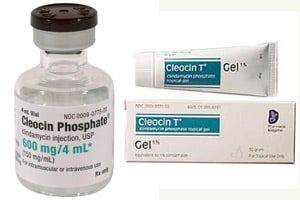
Pfizer’s antibiotic, Cleocin, is another in the medications that have injured patients with Stevens-Johnson syndrome (SJS) and toxic epidermal necrolysis (TEN). A new lawsuit accuses Pfizer of knowing about these risks for more than three decades and of concealing risks for SJS and TEN from patients and the medical community and for not disclosing these […]
 Pfizer’s antibiotic, Cleocin, is another in the medications that have injured patients with Stevens-Johnson syndrome (SJS) and toxic epidermal necrolysis (TEN).
Pfizer’s antibiotic, Cleocin, is another in the medications that have injured patients with Stevens-Johnson syndrome (SJS) and toxic epidermal necrolysis (TEN).
A new lawsuit accuses Pfizer of knowing about these risks for more than three decades and of concealing risks for SJS and TEN from patients and the medical community and for not disclosing these risks on Cleocin’s packaging and labeling.
We recently wrote that some cancer medications have been tied to SJS and TEN, according to recent research. Just prior, different research found that the gout medication, Zyloprim (allopurinol), has been associated with SJS and TEN, as well.
SJS and TEN are usually the result of medication use. SJS is a potentially fatal disorder that involves cell death in the skin and mucus membranes; TEN is a more serious form of SJS.
SJS causes blistering of the mucous membranes, usually in the mouth, eyes, and vagina, which can spread to internal organs; patchy areas of rash that ultimately peel off the skin; scarring; and blindness. TEN occurs in SJS patients when over 30 percent of the body is involved. Both SJS and TEN usually require hospital burn unit treatment.
Antibiotics, such as the sulfa drug co-trimoxazole, which is a trimethoprim and sulfamethoxazole combination; anti-seizure medications, including carbamazepine, phenytoin, phenobarbital, valproic acid, and lamotrigine; and pain medications, such as ibuprofen and naproxen have all also been tied to SJS in some patients, but this list can change and is not all-inclusive. SJS can be caused by just about any drug.
The key to stopping SJS is early diagnosis and intervention, which involves ceasing the implicated medication that has caused the condition. Since the warnings on so many medications are vague, most people do not recognize that SJS has developed when they begin experiencing the syndrome in its earliest stages. Also, because the syndrome and its symptoms are not widely known, people may ignore what initially seems to be a minor blister or rash, even though such an occurrence is a major red flag for SJS and TEN.
While not every rash or blister is SJS, it is critical that consumers understand the risks. Experts advise not using medications unless absolutely necessary, and informing your doctor if you experience flu-like symptoms or a blistering and rash while using any drug.
Patient advocates have also long argued that current drug allergy alert label information on many over-the-counter (OTC) medications is inadequate and does not contain sufficient user warnings about risk for SJS and TEN.
In the United States, prescription medications that are known to be associated with SJS often bear a black box warning, the U.S. Food & Drug Administration’s (FDA) most urgent warning.


